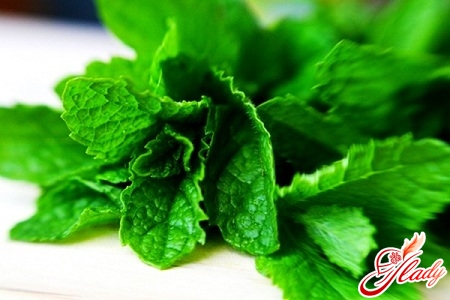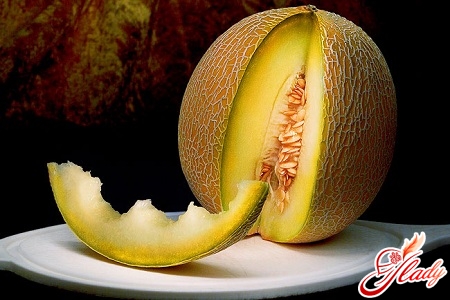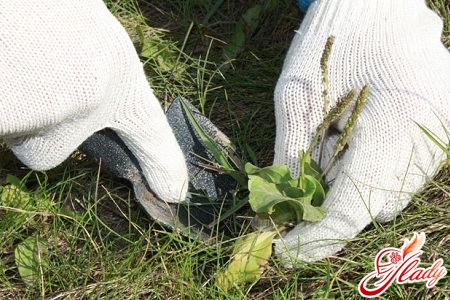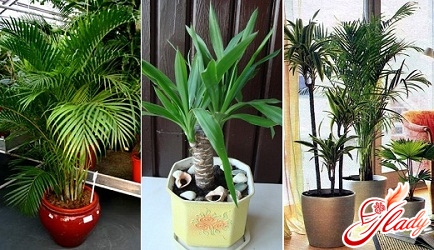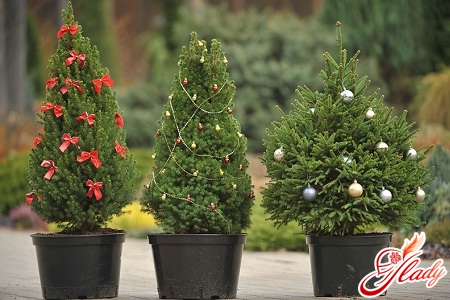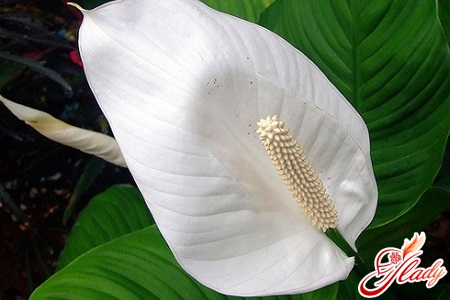
Spathiphyllum is a plant thatbelongs to the Araceae family. Its homeland is the countries of South America, as well as East Asia and Polynesia. If you have chosen the right location for the spathiphyllum in your home, then this plant will soon begin to bloom profusely and will delight you with its flowers all year round. Usually, spathiphyllum begins to bloom six months after planting, that is, when the plant is still very young, so it is important to protect it from all sorts of diseases and provide it with proper care. The genus spathiphyllum is more than forty-five species of stemless plants, distinguished by short rhizomes. Many of the subspecies are decorative, they are intended for city apartments and houses. They fit perfectly into any interior, decorating it and making it brighter. However, gardeners often face a difficult problem - blackening of the plant leaves. Why does this happen and how to solve the problem?

Spathiphyllum: what you need to know about your ward
First of all, let's look at the featuresof this plant. Translated from Greek, "spatha" means "covering", and "phylum" is a leaf. Indeed, the plant's covers resemble simple leaves in shape, which can be oval or lanceolate, have a vein in the middle or parallel on the side. Spathiphyllum petioles have a distinctive feature - they expand at the base. The plant's inflorescences are cobs located on a long stalk. Flowering usually begins in early spring. As a rule, spathiphyllums bloom for several weeks, but there are species that delight with flowering all year round, as mentioned earlier. After flowering, you need to remove the cover and cut off the existing flower stalks as low as possible. Spathiphyllum is distinguished by beautiful expressive leaves and bright flowers. In addition, the plant is not too demanding to care for, but you should not forget, for example, about regular watering and periodic spraying. Today, the most popular variety of spathiphyllum is the abundantly flowering one (underground stem 20 cm long and 5-6 cm wide). This plant has a bright green color, pointed foliage and a light, often white, cover, which is slightly concave in shape. No less popular is the pleasant spathiphyllum, similar to the abundantly flowering one. The only difference is in the size of the leaves - here they are larger (25x10 cm). The color of the cover is also different. In the second case, it has a greenish tint.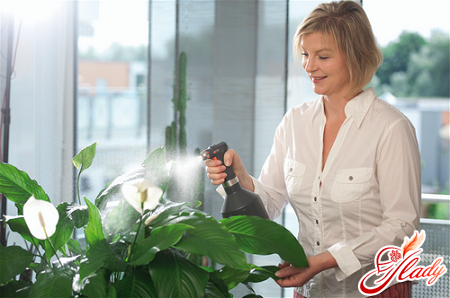
Basic rules of care
As already mentioned, very often in the processDuring its growth, spathiphyllum faces a number of problems. First of all, this is yellowing of the leaves and their drying out. In addition, the plant's leaf tips turn black due to improper care. So why does this happen and how can you prevent the occurrence of this or that disease? First of all, provide the plant with the necessary conditions. The appropriate temperature range is 22-26 degrees. If you want the plant to bloom lushly and brightly, you must take into account that it will need a dormant period for this. To do this, lower the temperature to 12-14 degrees for two to three weeks, while limiting watering. Please note that spathiphyllum does not tolerate drafts. Place the pot with the plant away from doors and windows if you constantly have the window open. Spathiphyllums love bright but diffused light. In summer, it is better to shade the plant from direct rays. It is best to place the pot with the flower in a light, slightly shaded place. In winter, the lighting should be sufficient - the spathiphyllum should not suffer from a lack of light. Pay attention to the peculiarities of watering. Spathiphyllum should be watered very abundantly during the spring and autumn, and in winter, watering is reduced. It is important to know that a lack of liquid, as well as its excess, can provoke all sorts of problems. This includes rotting of the root system, as well as problems with leaves or flowers. Often, the tips of the leaves turn black precisely because of improper watering. Now about fertilization - a lot also depends on proper feeding. Starting from about March and up until the end of September, feed the spathiphyllum using high-quality fertilizers, which can be purchased today in all flower shops. Pay attention to the quality of the fertilizer - it should not contain lime. If the plant blooms profusely in winter, then you need to feed the spathiphyllum about once a month. And do not forget that this plant prefers good air humidity. Wash, wipe and spray the flowers and leaves. Use warm water for this. It is important to know how to replant the plant correctly. In the case of spathiphyllum, replanting should be done annually, and it should be done in the spring. You do not need to choose spacious, too large pots for this - the size of the container should be suitable. For replanting, choose the following soil: two parts of turf, one part of leaf and peat soil in combination with one part of humus and sand. Add coal and perlite to the resulting soil, and place drainage at the bottom of the pot. Reproduction of spathiphyllum is the division of the bush, which occurs during the replanting process. When working with the plant, try not to injure the root system - it is very easy to damage it. Do not tear the roots with your hands - just cut them with scissors. After the division process is complete, spray the leaves, but do not water the plant for three days.
Problems in growing
We figured out the basic rules of care,теперь нужно подробнее поговорить о том, как лечить болезни спатифиллума, которые могут появляться по разным причинам. Не лишне узнать также, почему же эти заболевания появляются. Если в помещении слишком сухой воздух или низкий температурный режим, то вскоре вы заметите, что чернеют и сохнут кончики листьев. Такого желательно не допускать, поэтому следите за тем, чтобы температура не опускалась ниже необходимой нормы. Не стоит допускать и избытка жидкости, который также проявляется в проблемах с листьями и цветами. Если вы хотите повысить влажность в комнате, чаще опрыскивайте спатифиллум. Если же растение пострадало из-за холода, то переставьте горшок в утепленное, защищенное от ветра и сквозняка место. Если же спатифиллум заболел из-за избыточного перелива, то нужно достать растение из горшка и высушить почвенный слой. Со временем кончики листьев должны опять приобрести здоровый вид. Проблемы с почернением или отмиранием листьев, а также с цветением могут возникать и из-за слабого роста, причина которого – поражение паутинным клещом, тлей или щитовкой. Например, мучнистого червеца вы можете рассмотреть и невооруженным глазом – его воздействие проявляется в светлых выделениях на листьях растения. Эти выделения называют медвяной росой. Как правило, червец поражает корневую систему спатифиллума. Чтобы предотвратить поражение листьев червецом, нужно регулярно следить за растением, особенно в межсезонные периоды. Следуйте всем правилам ухода. Если же вредитель уже поразил растение, то вы должны обрезать поврежденные части, предварительно собрав вредителей. Для обработки спатифиллума используйте инсектициды, которые активно впитывает корневая система и переносит их по всему растению. Эти препараты убивают всех паразитов, которые высасывают клеточные соки растения. Спатифиллум нуждается в хорошем грамотном поливе и частых опрыскиваниях. Если вы заметили, что растение высыхает, обеспечьте ему более разносторонний комплексный уход. Устраивайте растению своеобразный душ, который оживит спатифиллум, сделает его цветы и листья более яркими. Но в том случае если помещение прохладное, злоупотреблять таким «душем» не нужно, чтобы растение не замерзло. Часто листья растения, так же как и его цветы, страдают из-за избыточного полива. Многие цветоводы, думая, что чем больше жидкости получит растение, тем лучше оно будет расти, серьезно заблуждаются. Даже если вам показалось, что растение стало слишком сухим и его нужно чаще поливать, не стоит переходить к таким мерам – вы можете усугубить имеющуюся ситуацию. Результат – загнивание корней, почернение листьев, увядание цветков. Старайтесь и здесь придерживаться нужного баланса. Если же почва уже слишком переувлажнена, то лучше пересадить растение. С помощью пересадки спасти его, может быть, и получится. Если же спатифиллум не пересадить вовремя, то он и вовсе может погибнуть. Удобряя растение, старайтесь его не перекормить. Все витамины, микроэлементы и другие полезные вещества должны находиться в почве для растения в умеренном, достаточном количестве, но не в переизбытке. То же самое можно сказать и про недостаток подкормки. В данном случае растение начнет увядать и сохнуть. С вашей стороны очень важно нормализовать подкормку, сделать ее сбалансированной и оптимальной. Подбирайте только те вещества, которые подходят именно для спатифиллума. Каждая порция удобрения должна быть средней величины, не слишком объемной, но и не слишком маленькой. Причин, которые провоцируют болезни спатифиллума, невероятное количество. Но все проблемы возникают главным образом из-за неправильной подкормки, полива, слишком низкой или высокой температуры, то есть из-за несоблюдения правил ухода. Как только вы увидите, что растение заболевает, немедленно начинайте его спасать. Обеспечив спатифиллуму грамотный комплексный уход, вы сможете вырастить у себя в доме или квартире по-настоящему восхитительное растение, которое освежит и украсит интерьер!




